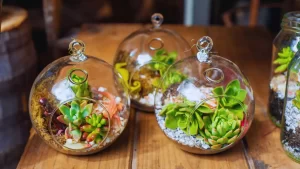Yes, you can freeze cat food in most cases. Freezing cat food can help preserve freshness, save money from waste, and allow you to buy food in bulk. However, there are some important factors to consider when freezing cat food.
Can You Freeze Cat Food?
Benefits and Considerations of Freezing Cat Food
Freezing cat food has several benefits:
- Preserves freshness and nutritional value of food for longer
- Reduces food waste by allowing storage for later use
- Saves money by buying food in bulk when on sale
- Provides the convenience of ready-made meals on hand
However, there are also some considerations:
- Some cat foods do not freeze well and can spoil
- Freezing and thawing can affect texture and palatability
- Food safety practices must be followed to avoid contamination
- Storage space is required for frozen food
Types of Cat Food That Can Be Frozen
Most wet and dry cat foods can be successfully frozen:
- Canned/pouch foods: Both fish and meat varieties can be frozen
- Raw foods: Freeze in serving sizes to preserve nutrients
- Freeze-dried foods: Ideal for freezing, retain texture well
- Dry kibble: Works well frozen to extend shelf life
Avoid freezing open cans of cat food for more than 3-4 days. Discard immediately if you notice any spoilage.
Proper Freezing and Thawing Methods
To safely freeze cat food:
- Seal the food in airtight freezer bags or containers
- Flatten to remove air pockets
- Freeze immediately after purchasing or opening
- Thaw refrigerated overnight before serving
Avoid repeated freeze-thaw cycles which degrade texture and taste. Thaw only what will be immediately fed.
Portioning Out Meals
Freeze cat food in single-meal portions:
- Use ice cube trays for wet food amounts
- Portion dry kibble in small zip-top bags
- Label with food type and date frozen
- Keep an inventory of quantities
Proper portioning makes thawing and feeding easy.
How Long Can You Freeze Cat Food?
Shelf Life of Frozen Cat Food
- Wet canned/pouched food: 2-3 months maximum
- Dry kibble: Up to 6 months
- Raw frozen cat food: 6-12 months
Discard any expired or spoiled frozen cat food. Signs of spoilage include off-odors, texture changes, and discoloration.
Recommended Storage Duration
For the best quality and food safety:
- Use wet canned food within 1 month
- Dry kibble within 2-3 months
- Raw frozen food within 4-6 months
The shorter the freezing time, the better the food retains its nutritional value, flavor, and appeal.
Tips for Freezing Cat Food
Using Freezer-Safe Containers
Choose suitable airtight containers:
- Rigid plastic containers with tight lids
- Heavy-duty freezer bags
- Mason jars
Avoid containers with thinner plastic that become brittle. Don’t use glass that may crack.
Labeling and Dating Frozen Cat Food
Clearly label all frozen cat food with:
- Type of food
- Quantity, number of servings
- Freezing date
Labeling prevents confusion and discards expired food.
Precautions and Storage Guidelines
Follow the guidelines to safely freeze cat food:
- Freeze in a working freezer at 0°F or below
- Place cat food containers on lower shelves
- Leave space between containers for airflow
- Avoid over-packing freezer
- Keep freezer clean and organized
Proper freezing and storage help maintain nutritional content and taste.
Conclusion
Freezing is an effective way to preserve cat food and reduce waste. Most types of cat food can be frozen by following proper methods. Use suitable containers, label properly, and adhere to recommended time limits for freezing. With some planning, freezing can help save money on cat food while providing fresh, nutritious meals for your cat.







